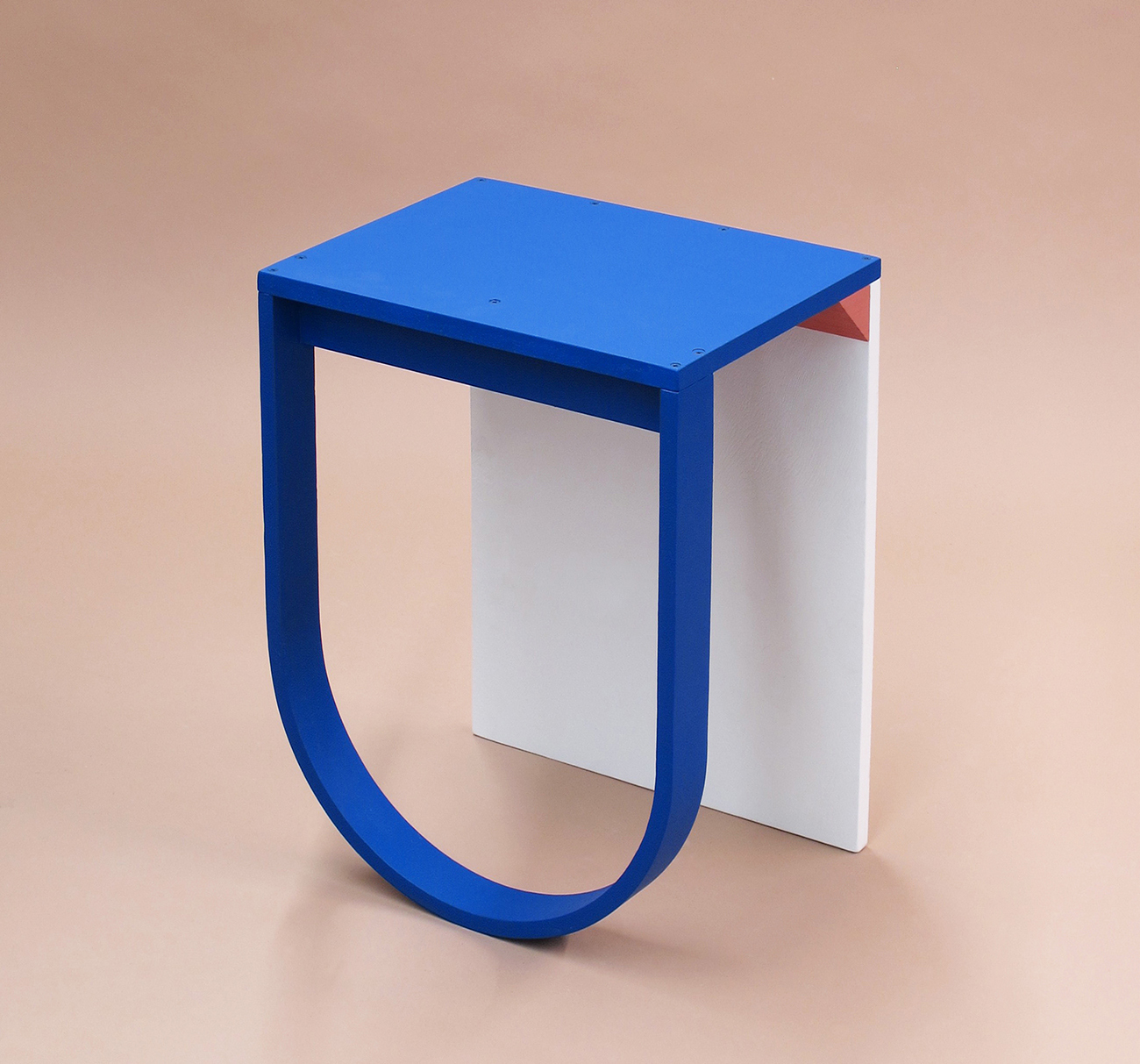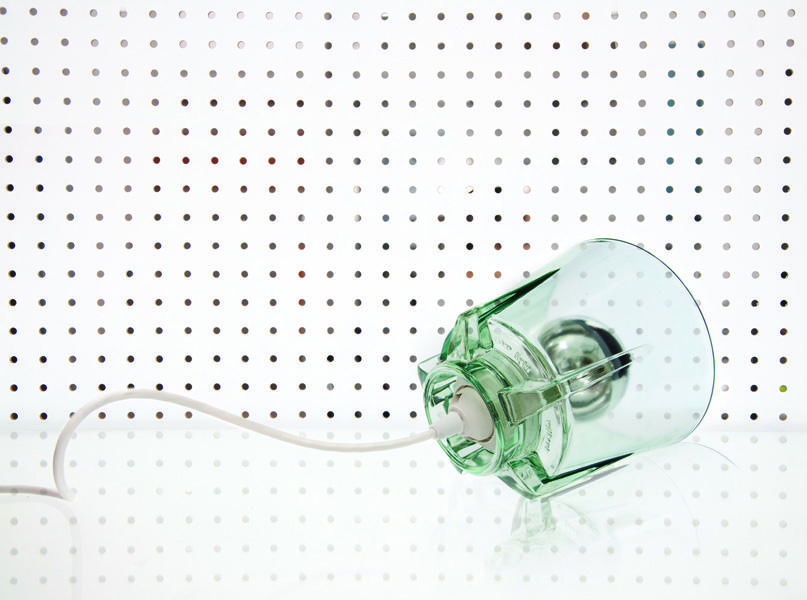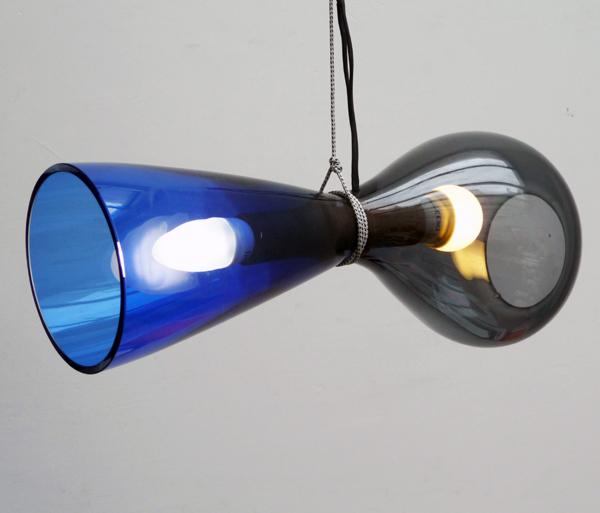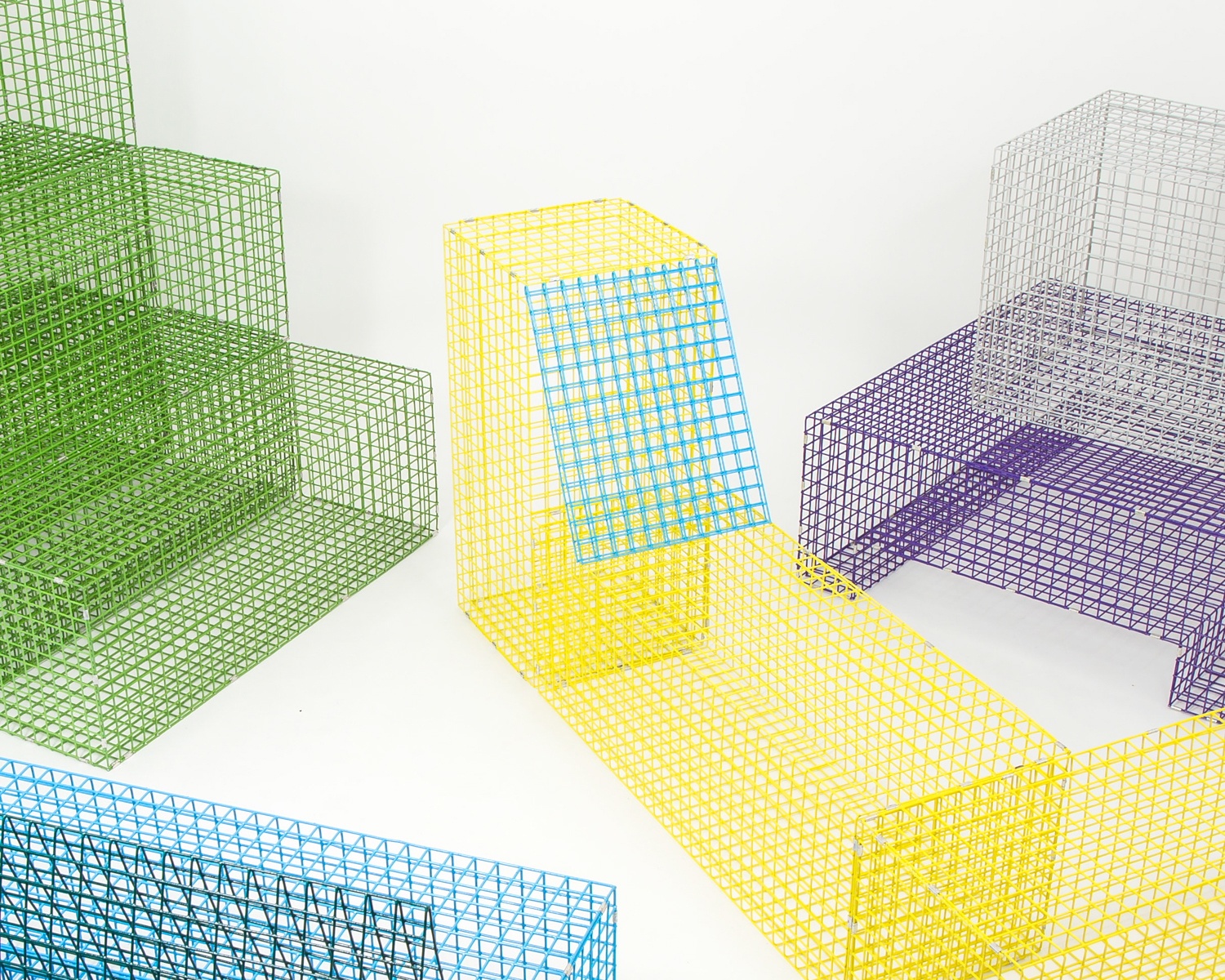
09.08.17
Excerpt: Exhibition
You’ll Never Guess What These Five New Furniture Collections Are Made From
Sometimes the act of curating can be cerebral and intense, with hours of back and forth between curator and designer. But sometimes, it more resembles a Project Runway–style challenge, with a strict set of parameters, a quickie budget, and a compressed deadline. Our latest project fell into the latter camp, but the great thing about working with designers you love and trust is that the results are guaranteed to be amazing, no matter the circumstance. After our success last year with Bower creating lounge furniture for Refinery29’s 29Rooms pop-up, we were asked to repeat the exercise, only bigger and better — five suites of furniture to sprinkle at various points throughout the mega-instagrammable Williamsburg funhouse that opened today and runs through Sunday. We asked five Brooklyn-based studios to each create a set of benches, chairs, and tables that might reflect Refinery’s theme of “Turn It Into Art,” and we’re sharing the results today — colorful, fishing-inspired pieces by Asa Pingree; pink, turned-wood benches by Pat Kim; upcycled Home Depot chaises by The Principals; studio scraps–turned–coffee tables by Vonnegut / Kraft; and carved wood, stone, and glass by Chen Chen & Kai Williams, among others.
Asa Pingree
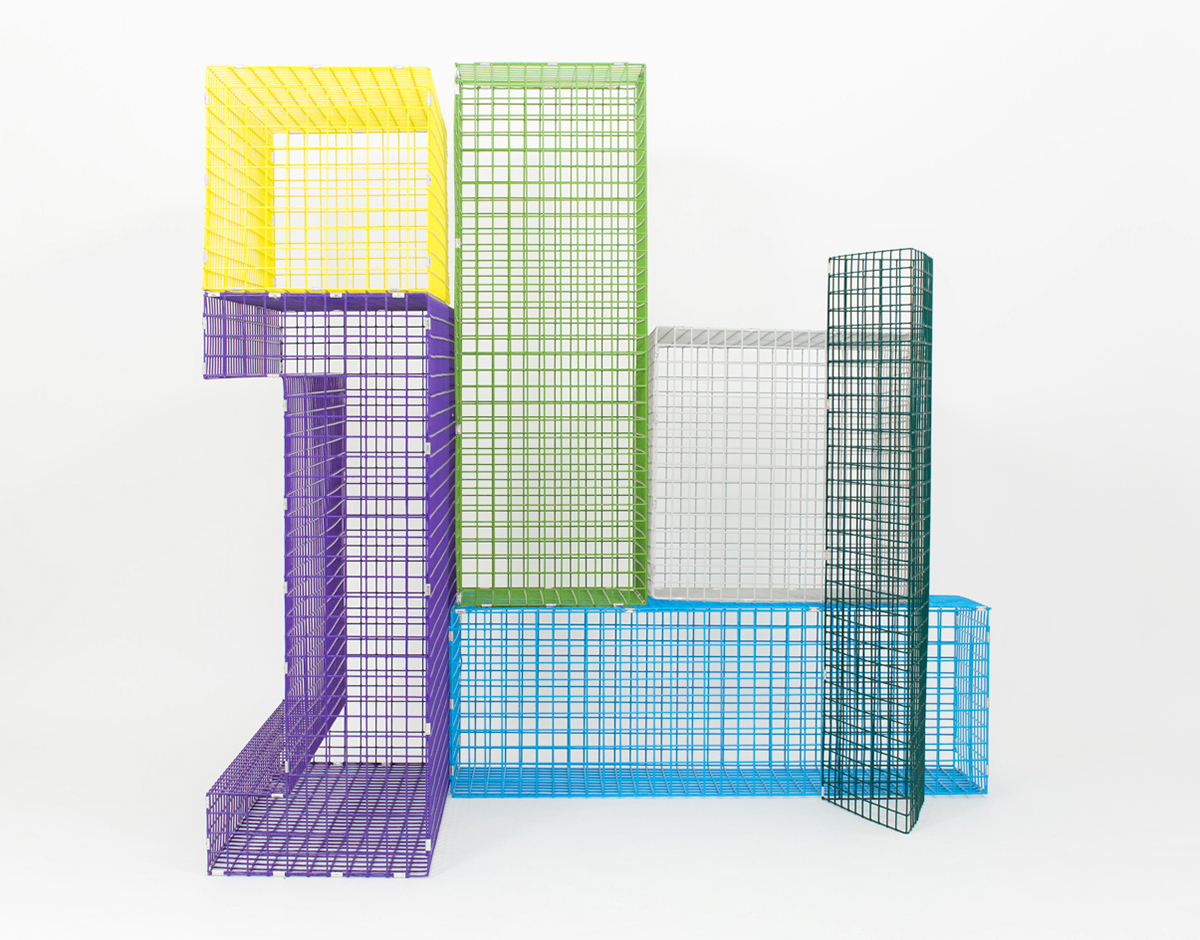
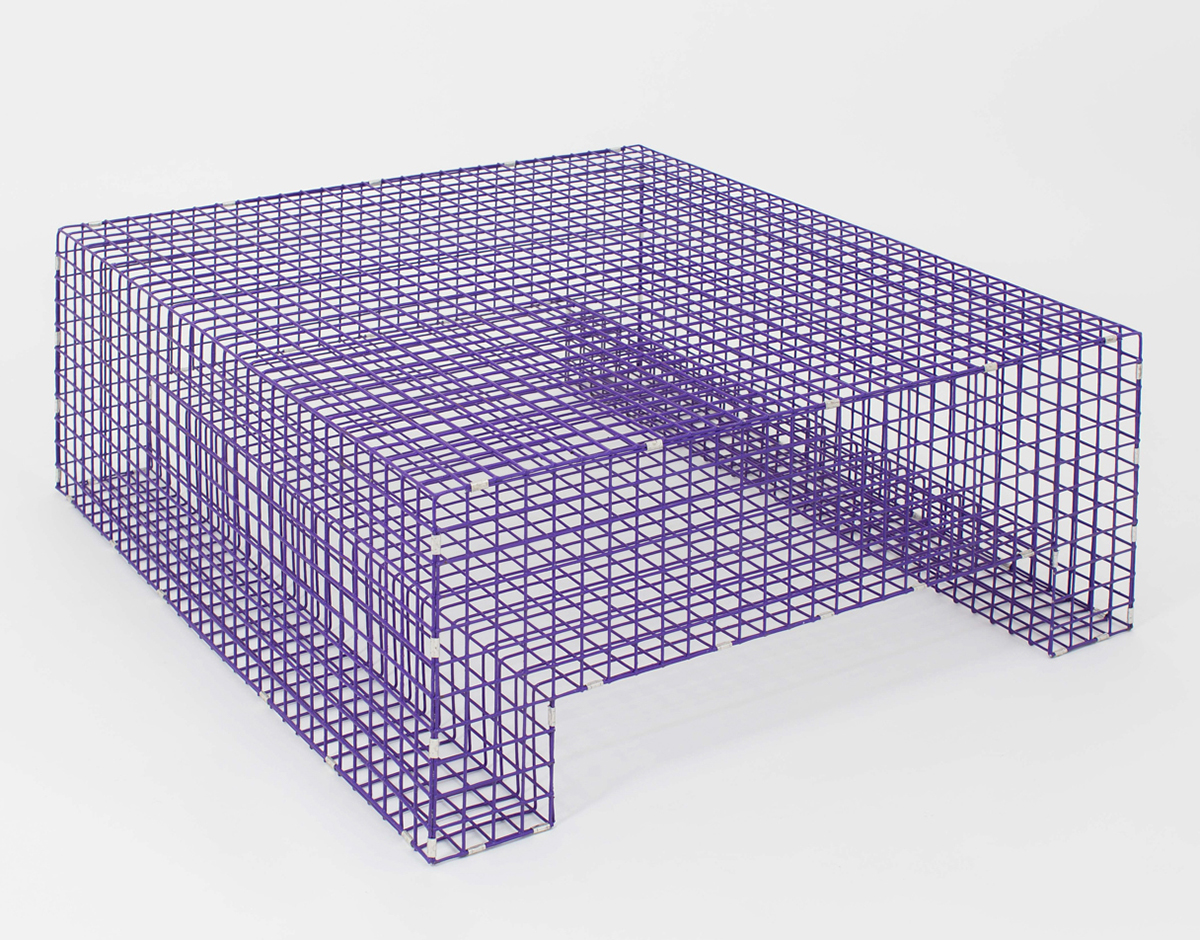
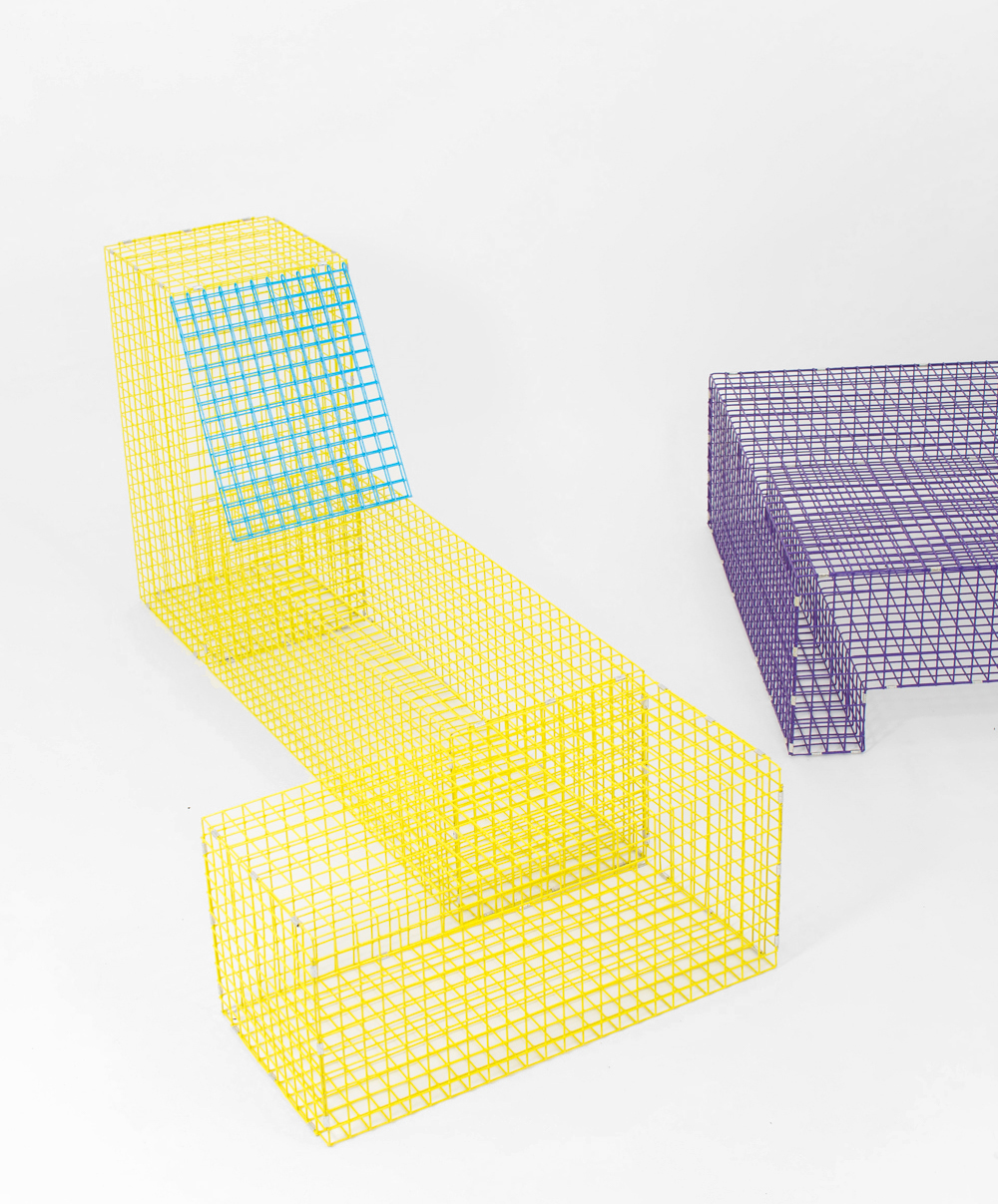
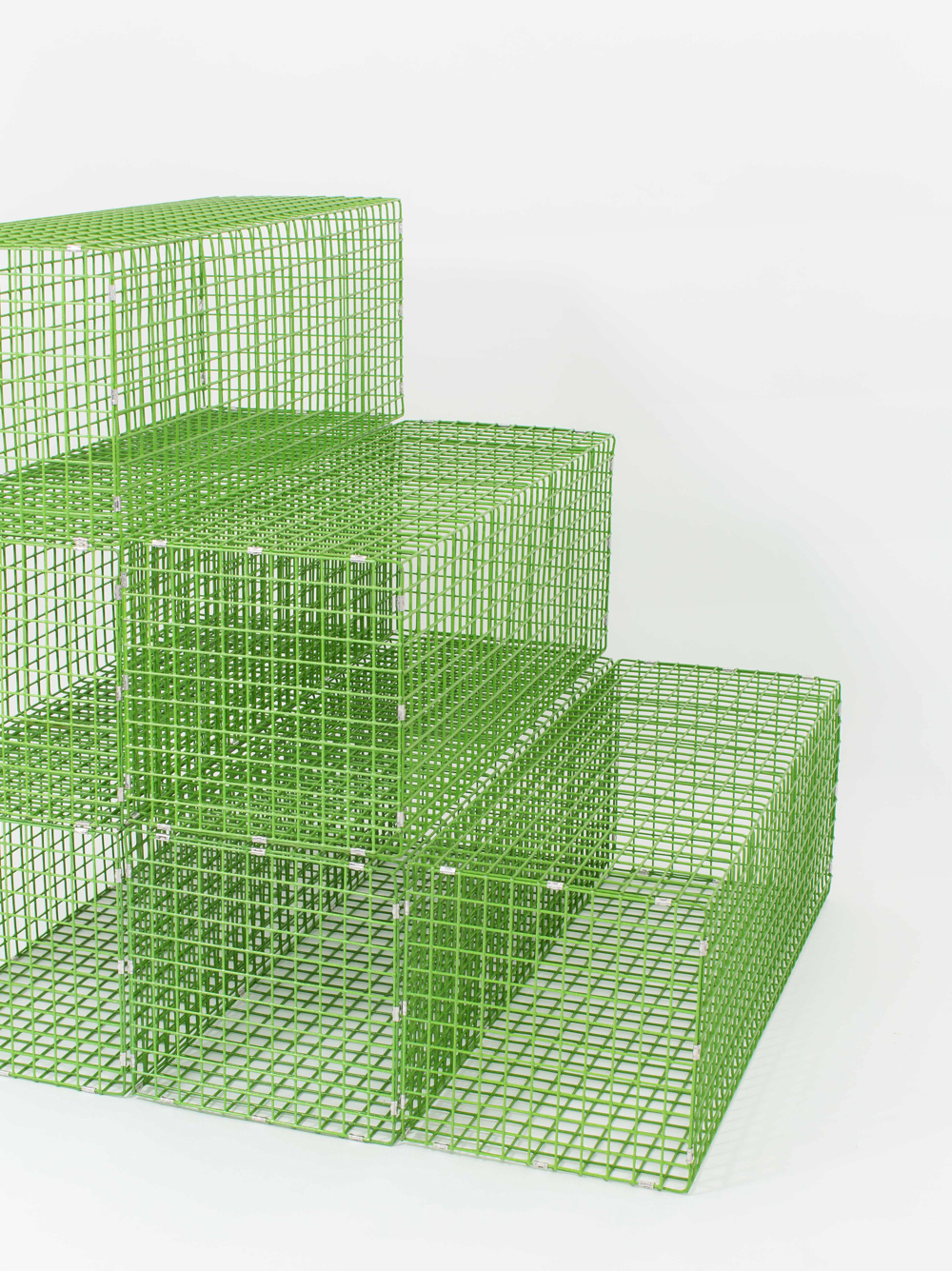
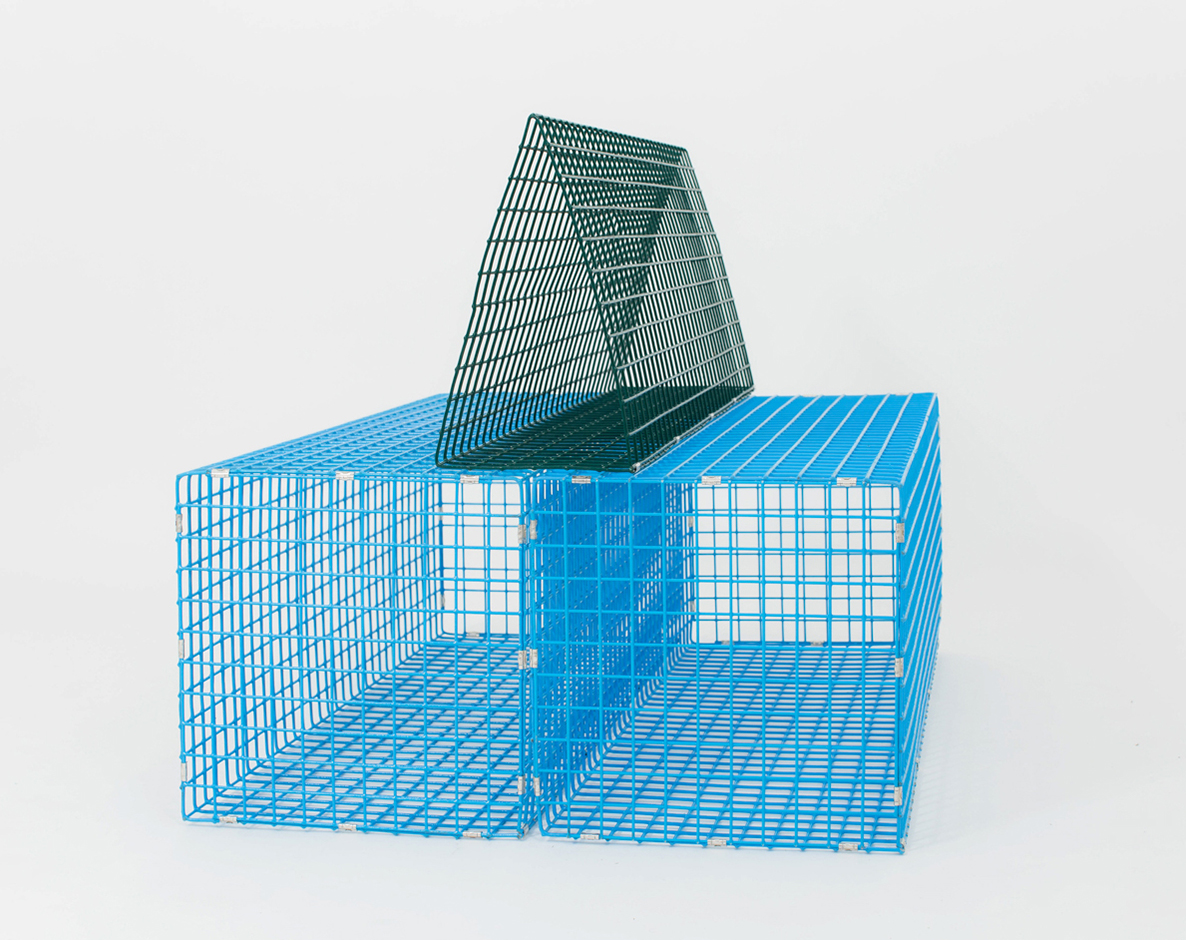 Materials: Vinyl dipped wire mesh
Materials: Vinyl dipped wire mesh
“For this project, I wanted to make large, colorful objects that could be built simply and with a minimal amount of materials. Growing up on an island off the coast of Maine, you’re surrounded by lobster traps. The wire traps used to be predominantly forest green, but in recent years, the colors have started to become more vibrant in an endless attempt to improve the catch. To fabricate the Trap Collection, I worked with Brooks trap mill — they’ve been building traps for more than 70 years. I built a few traps growing up, but designing the collection really became a collaboration as Mark Brooks and I experimented with where my ideas fit into their processes and the limitations of the materials.”
Pat Kim
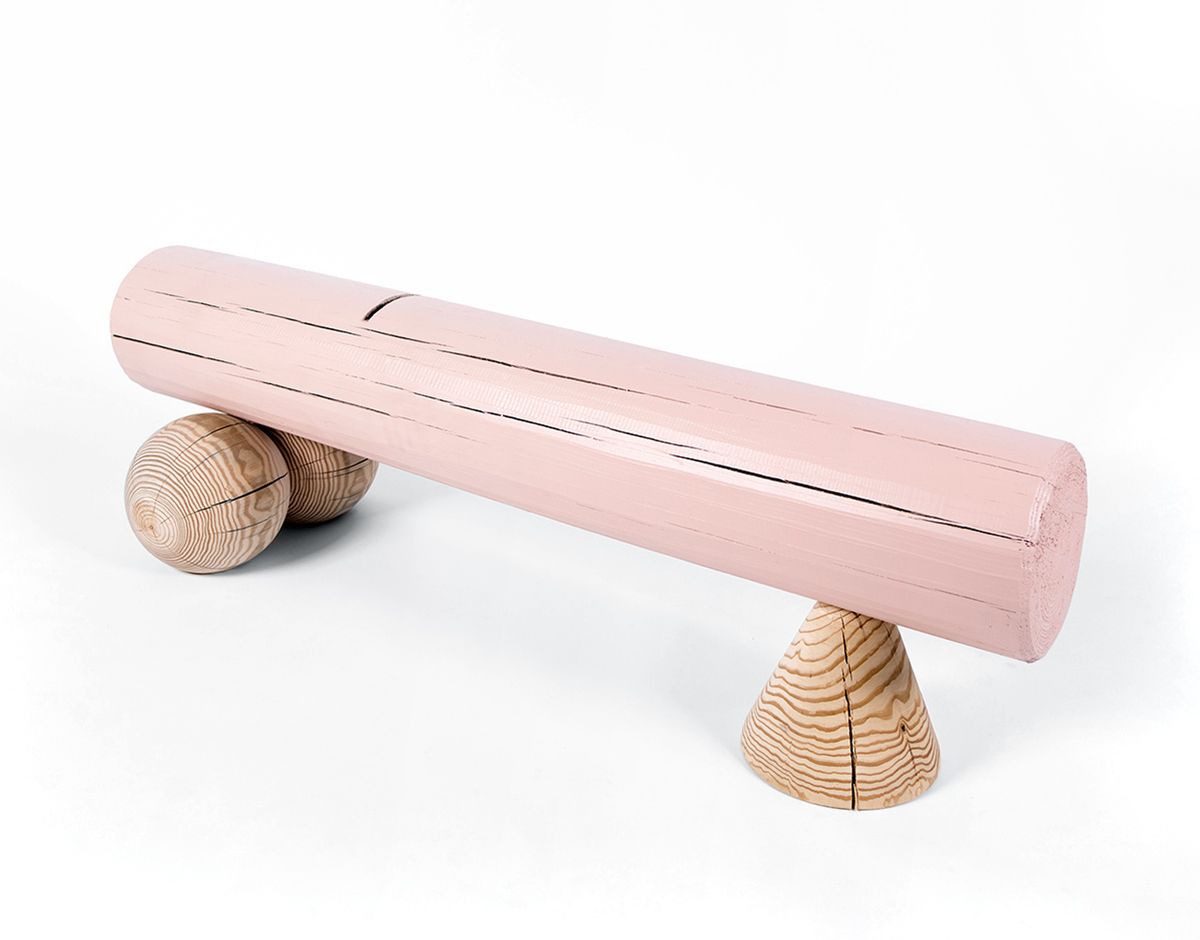
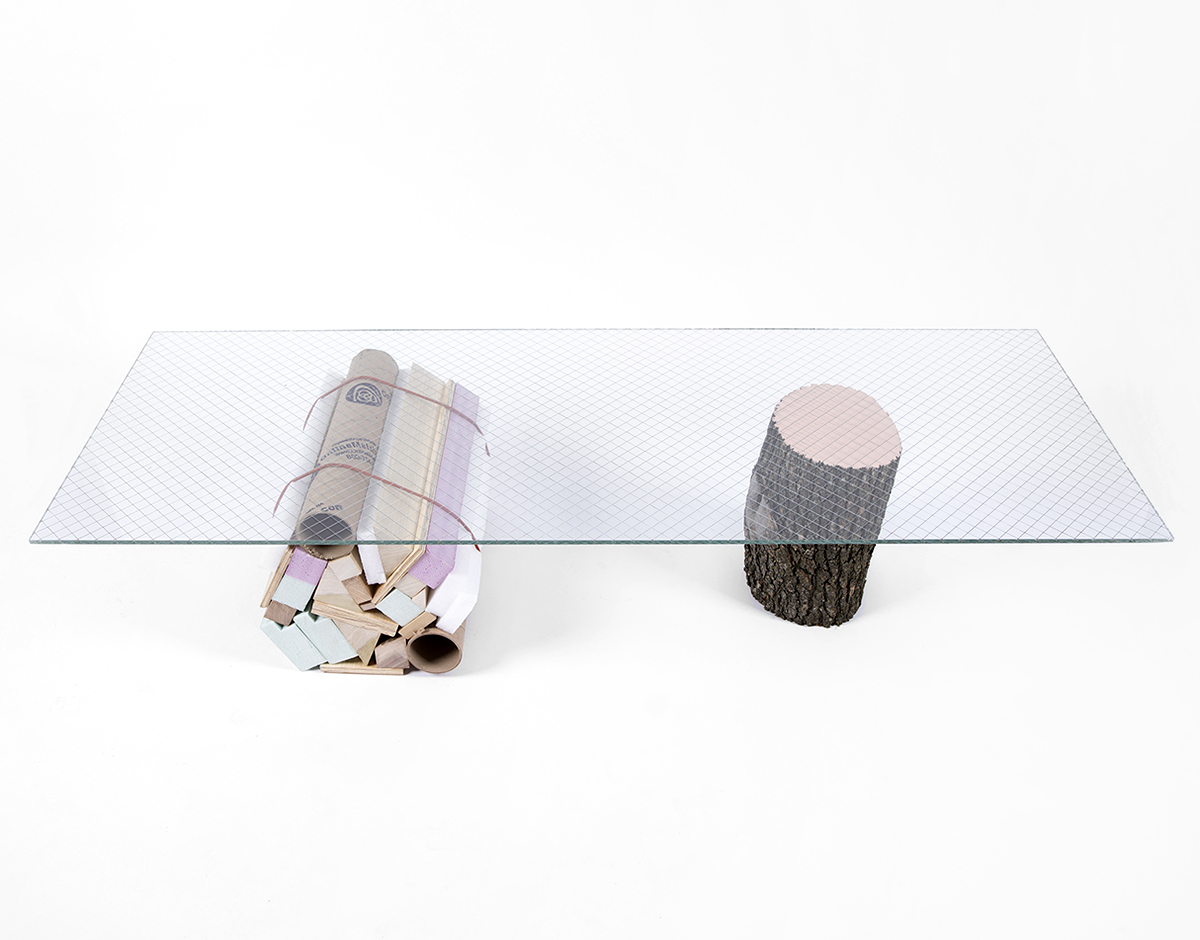
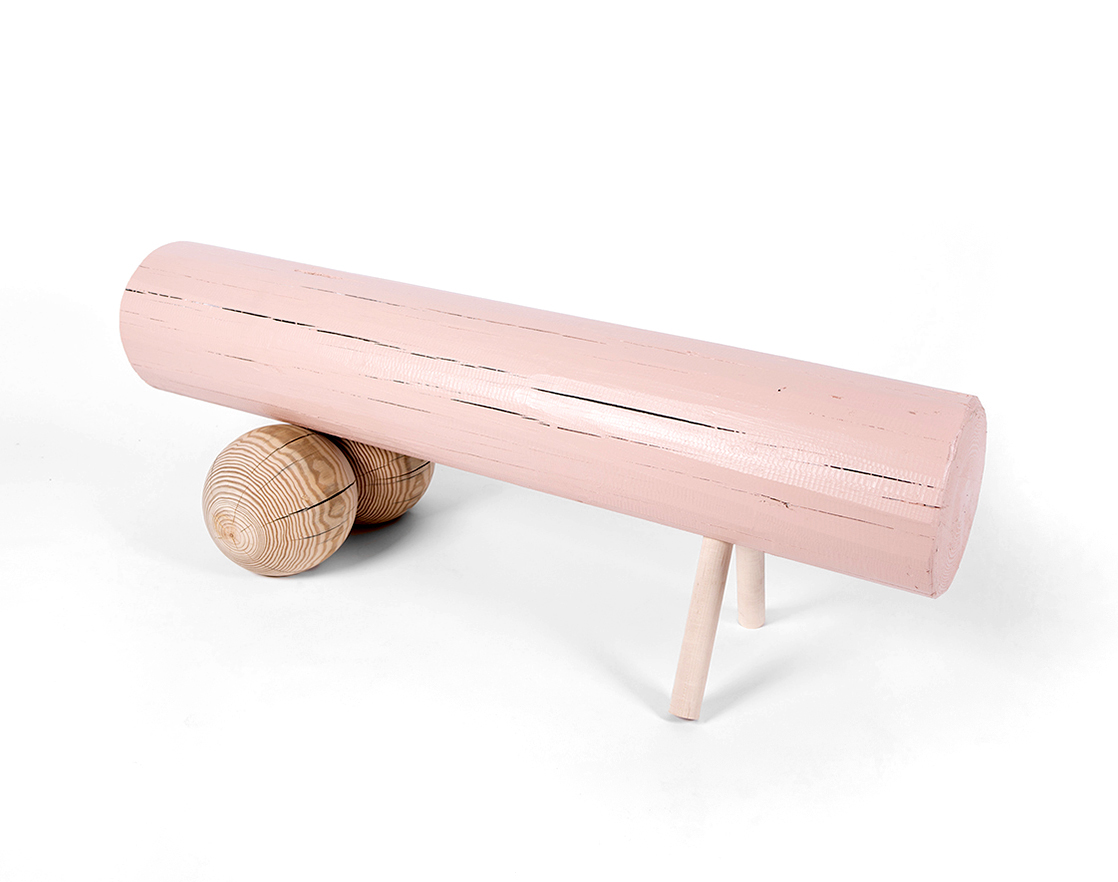
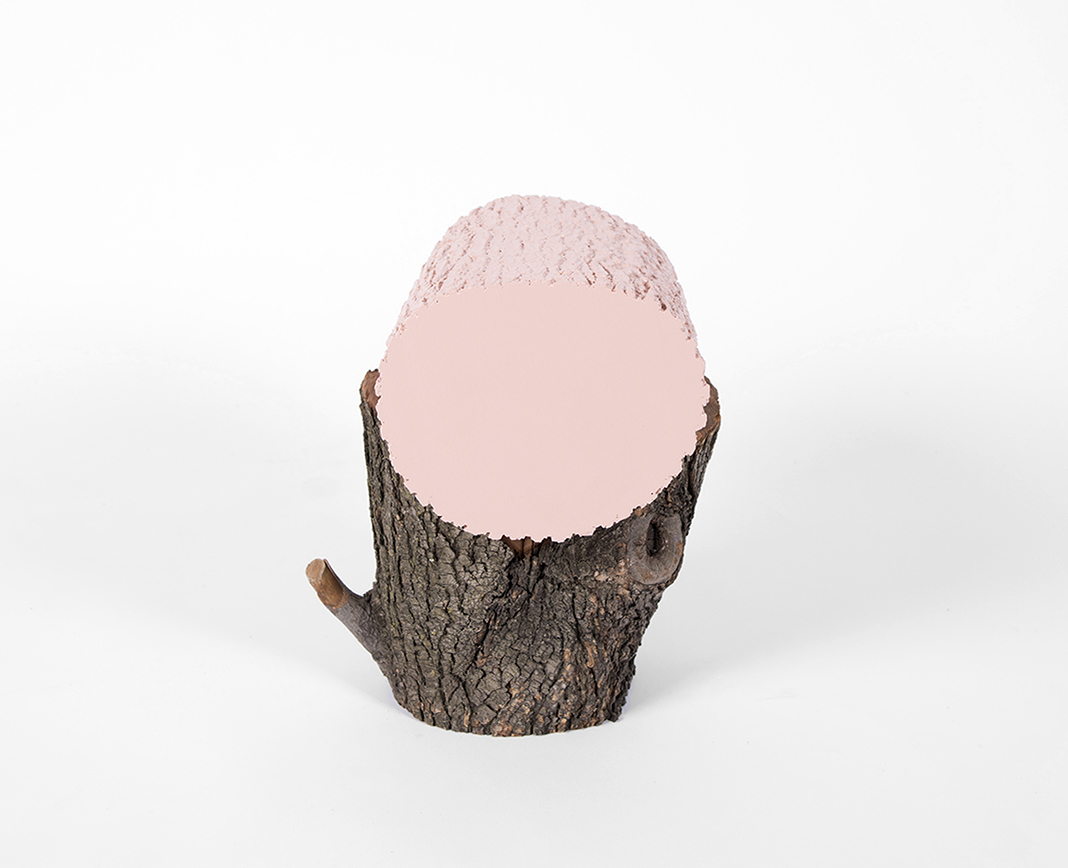 Materials: Marine pile, Southern Yellow Pine (benches); Bradford pear tree (side table); foam, various hardwoods, plywood, paper tube, silicon (coffee table)
Materials: Marine pile, Southern Yellow Pine (benches); Bradford pear tree (side table); foam, various hardwoods, plywood, paper tube, silicon (coffee table)
“This collection of experimental furniture explores the process of removing matter from the waste cycle and sequestering it in the domestic environment.”
The Principals
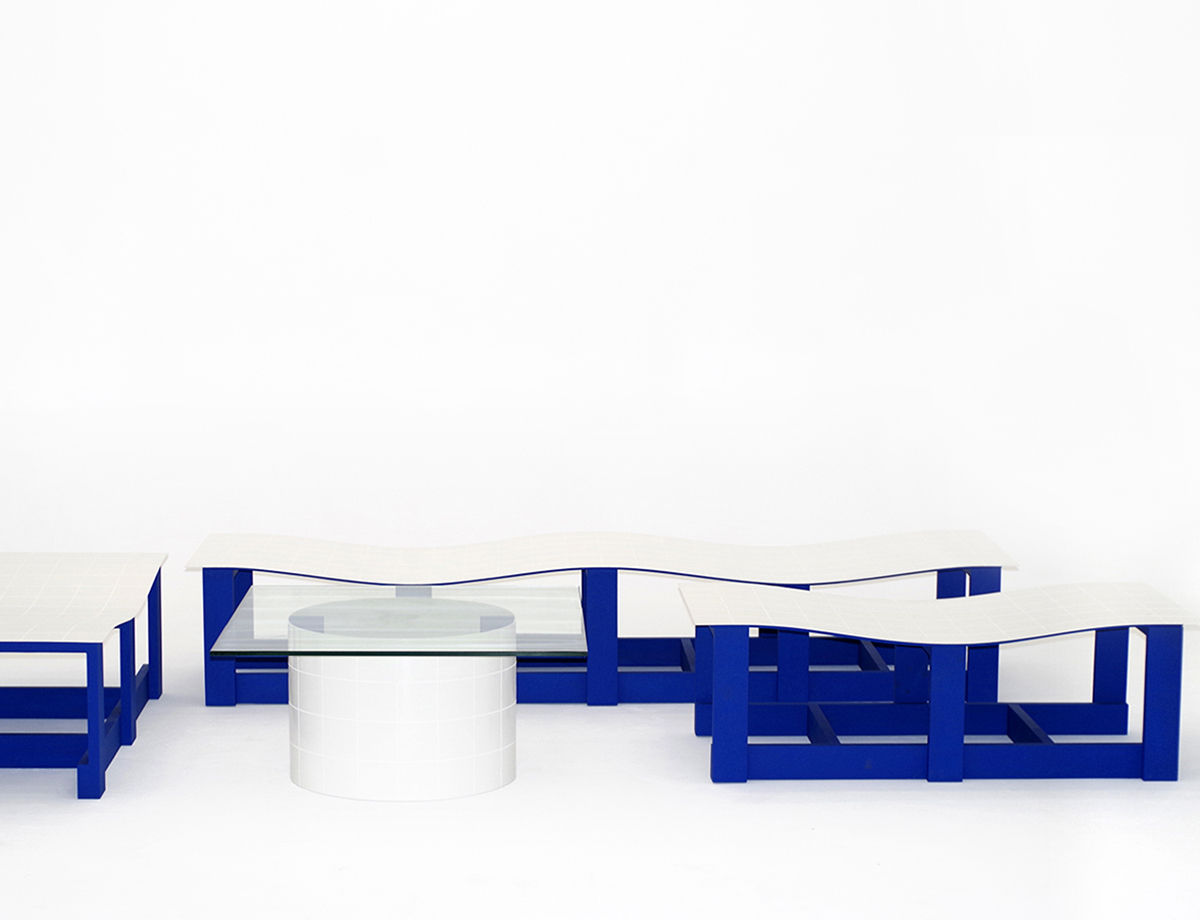
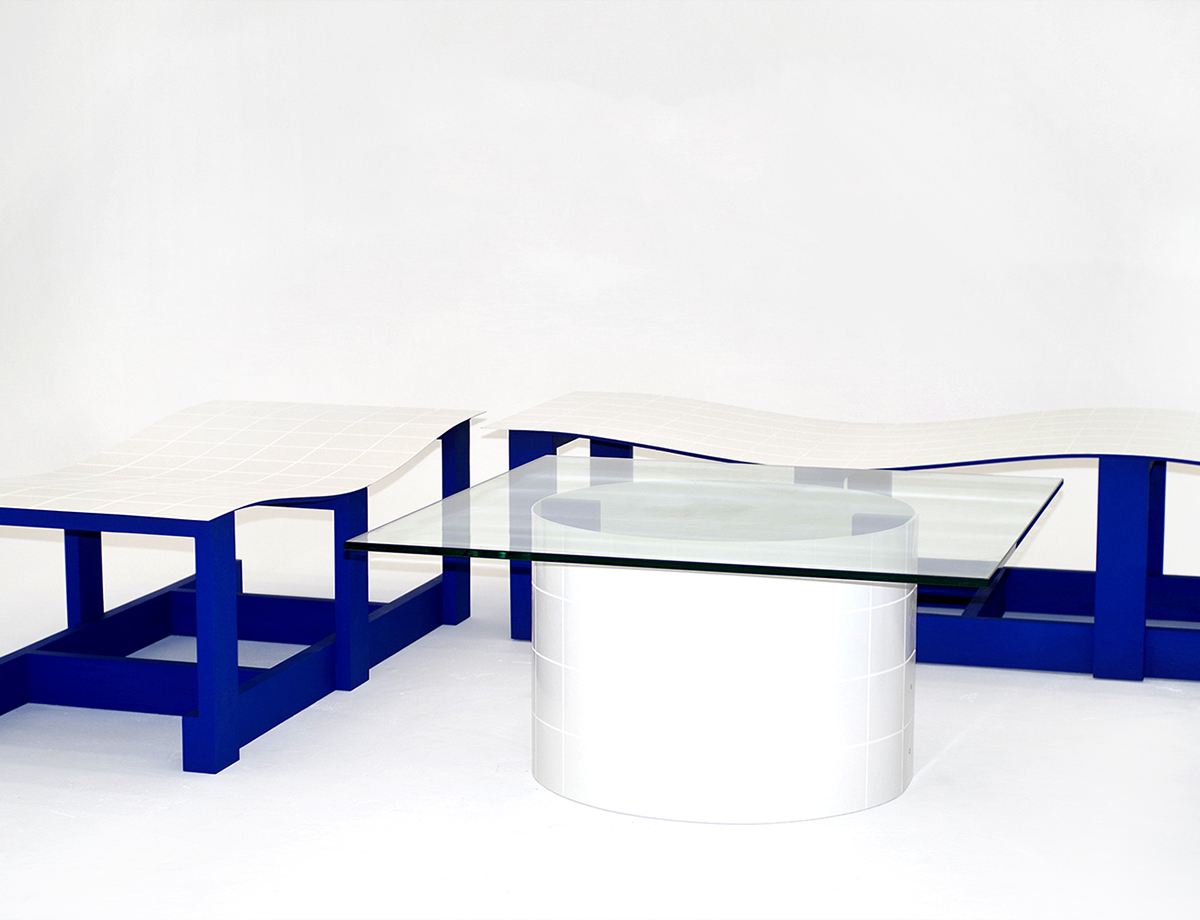
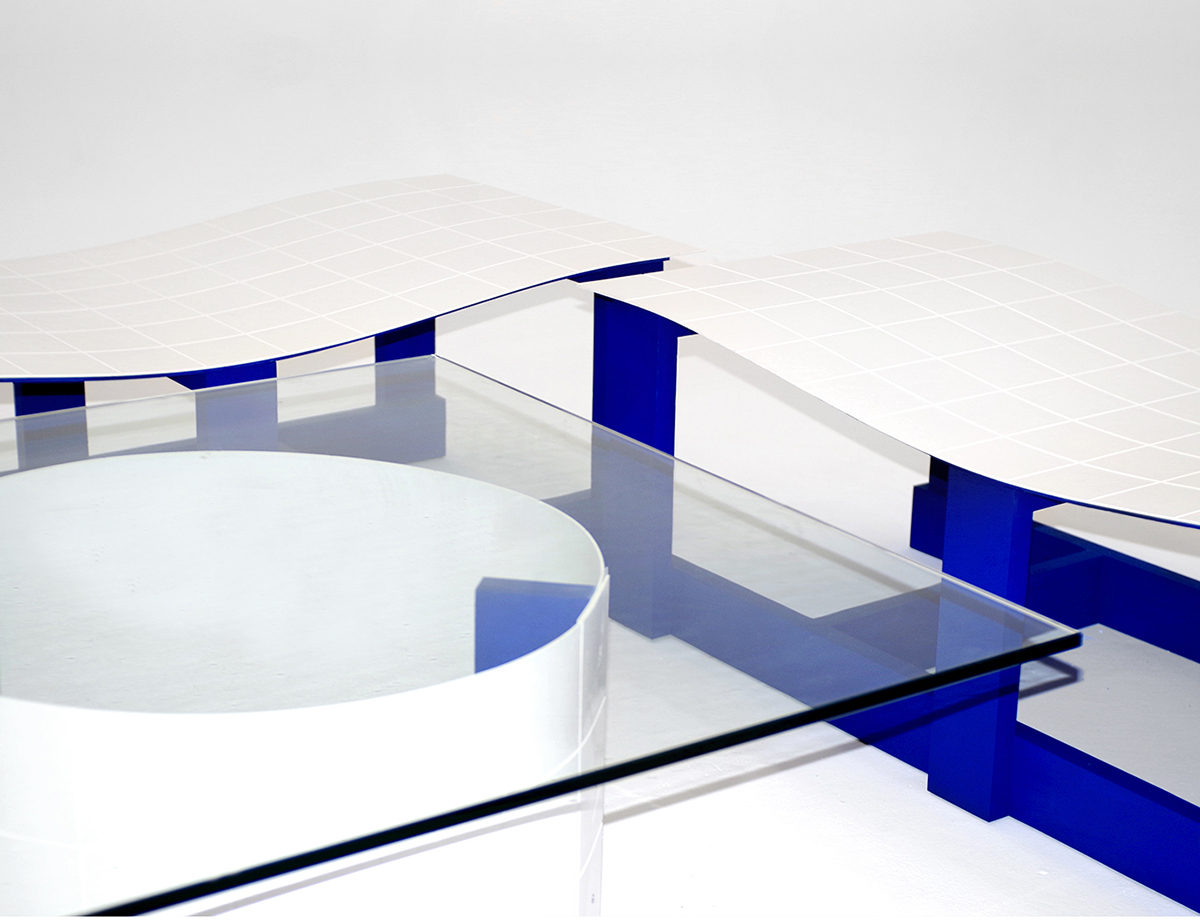
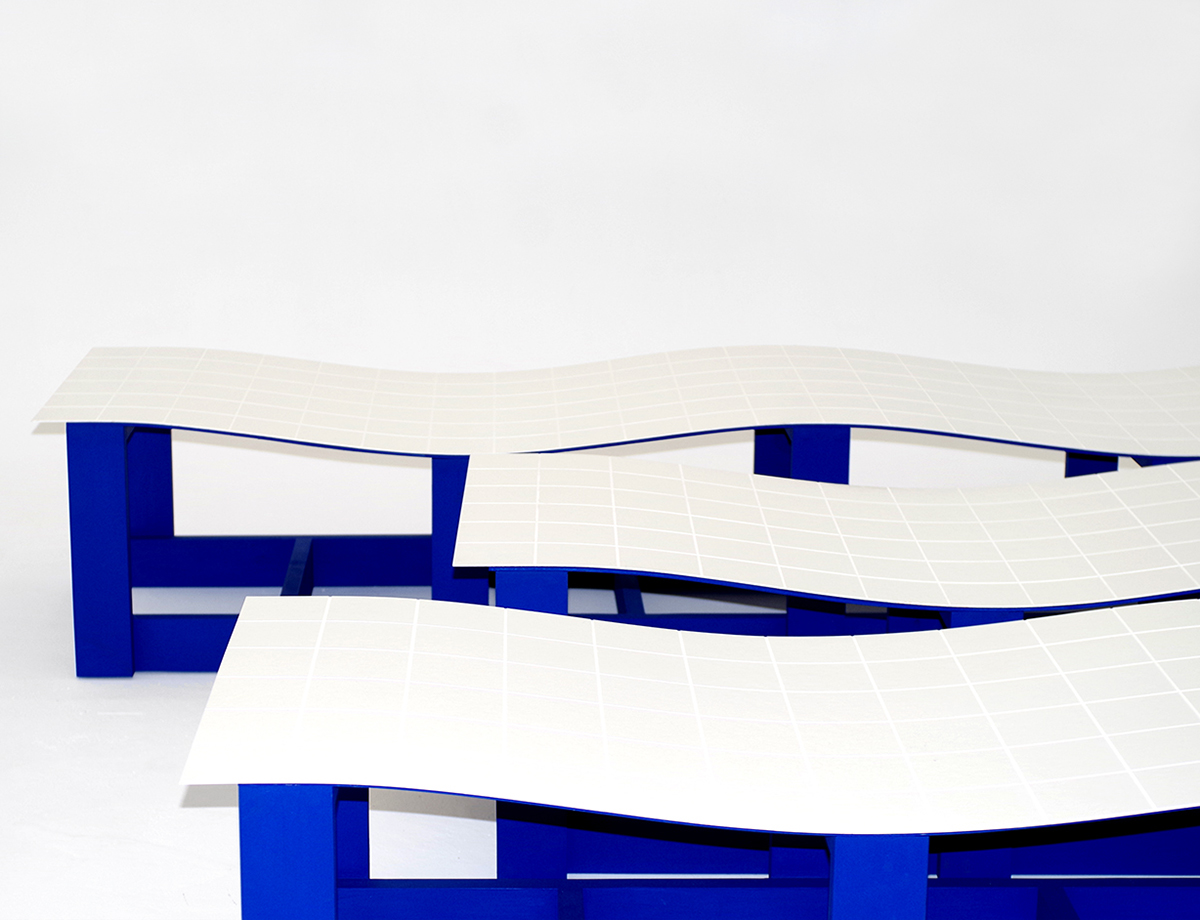
Materials: White score reinforced fiberglass wall tile, pine
“We used white faux tile from Home Depot, and pine framing painted blue to match the colors and shapes of the pool we spent our summers at — Campus Cabana Swim Club (home of the seahorses!) in suburban Baltimore.”
Vonnegut / Kraft
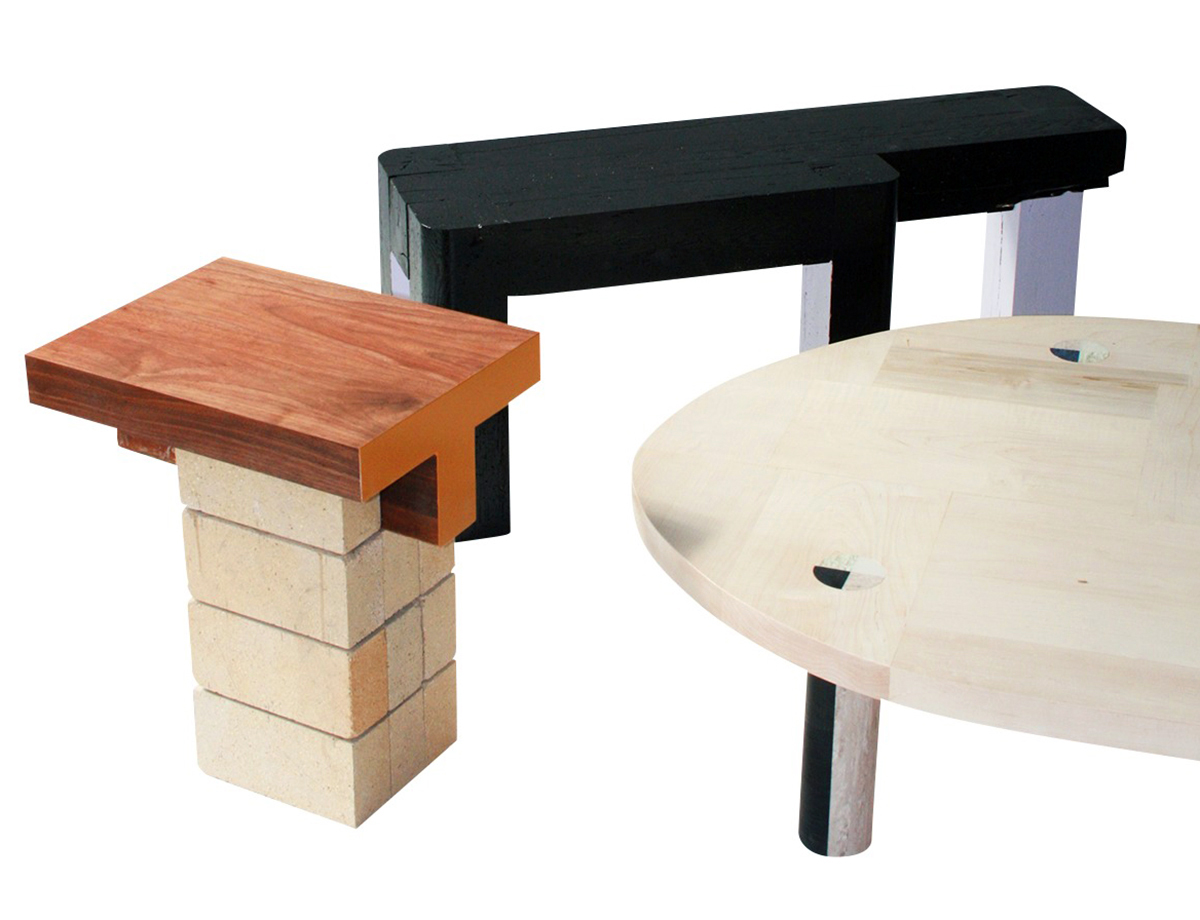
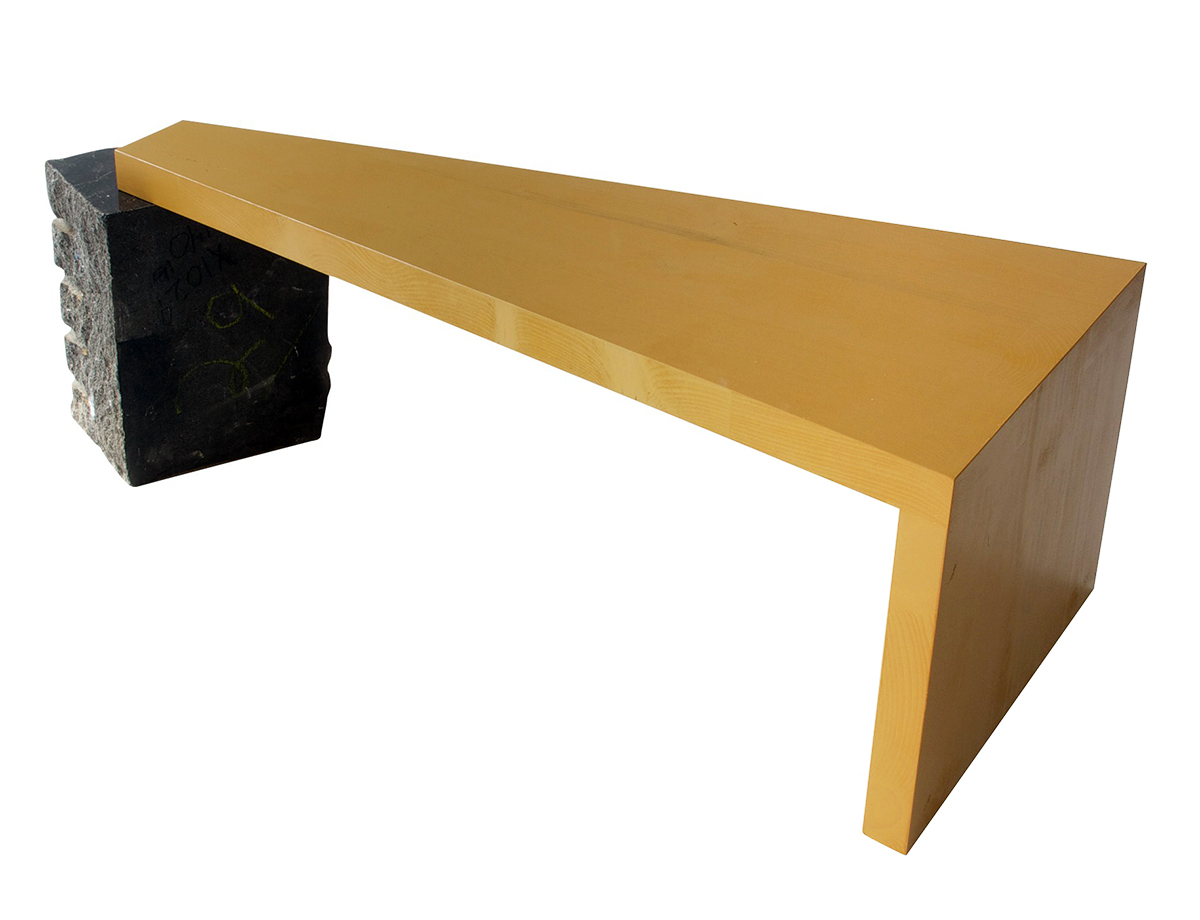
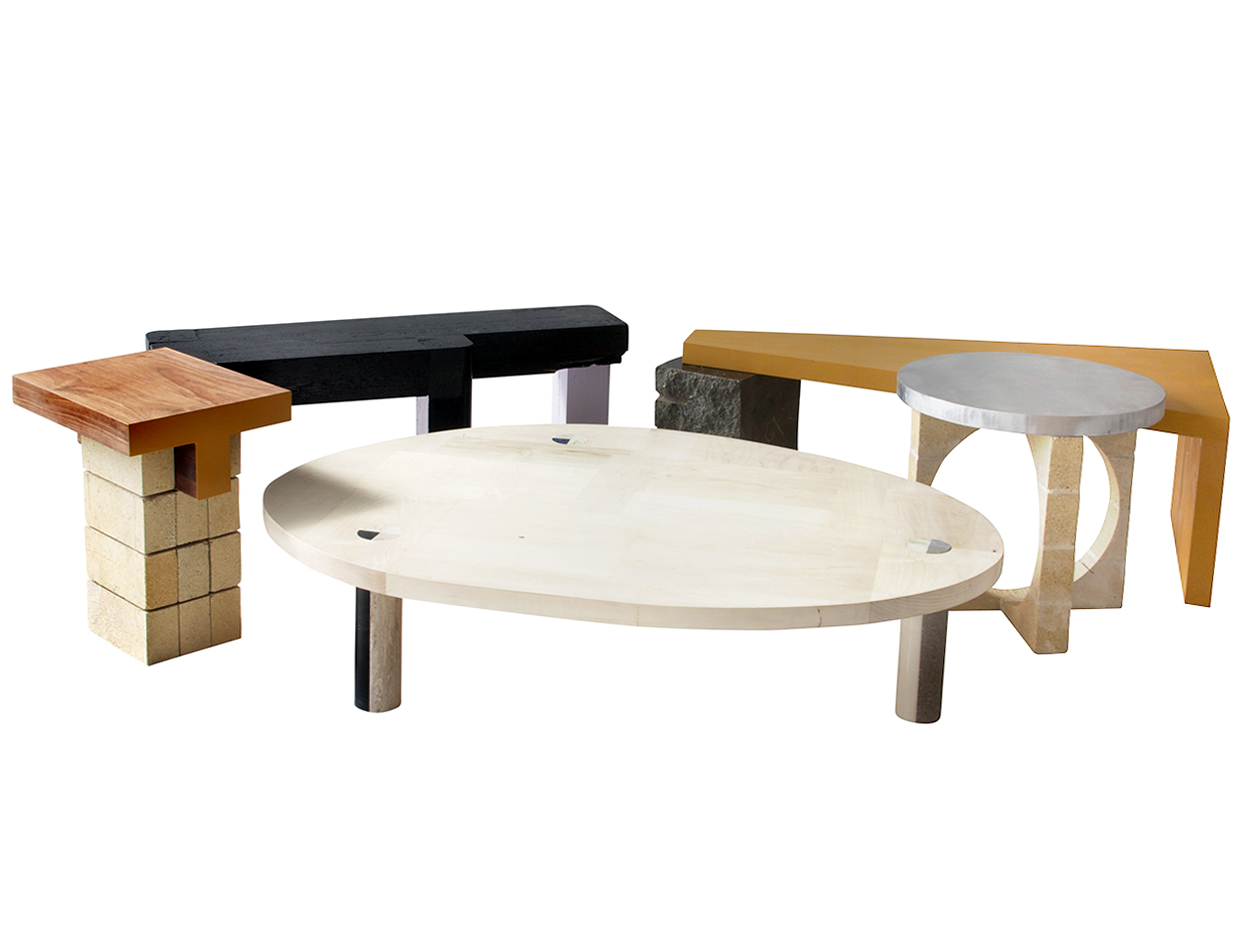
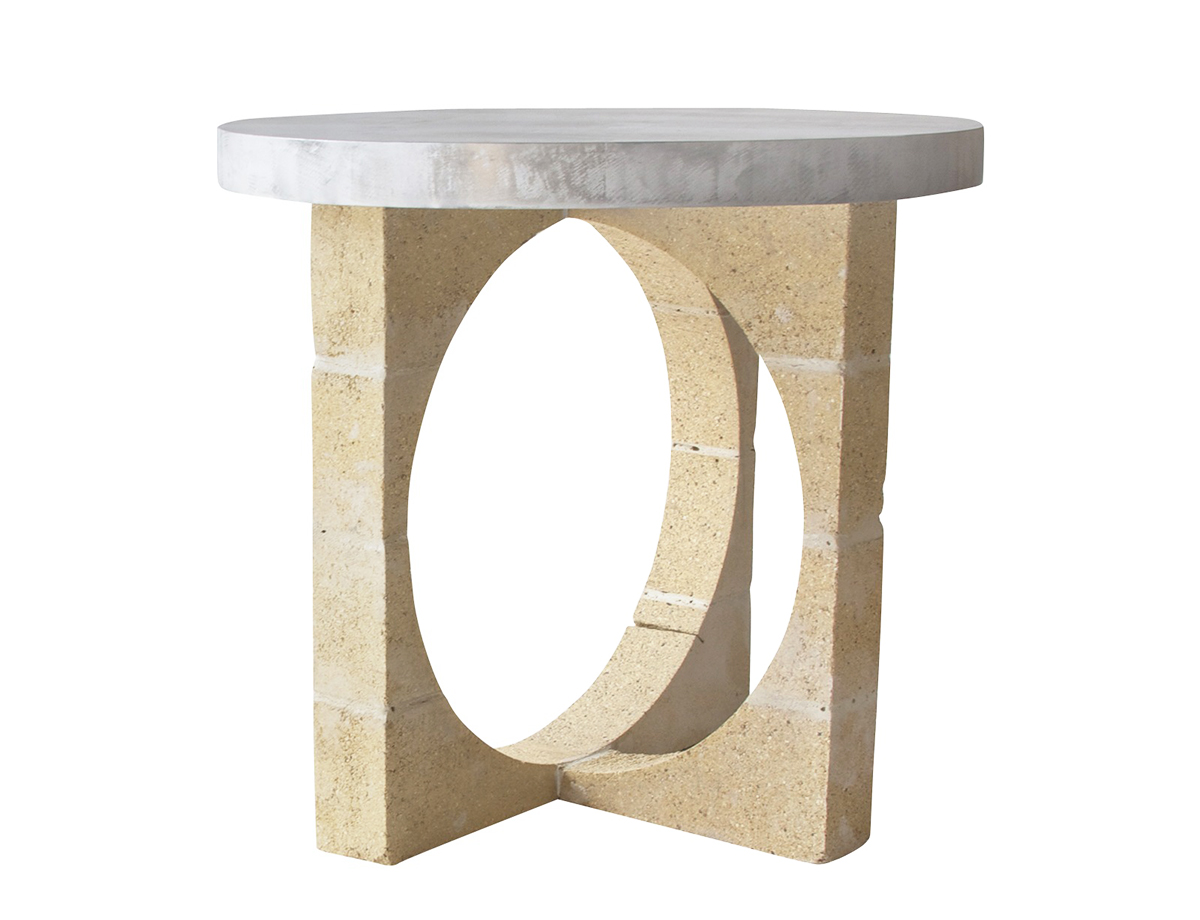 “For this project we really focused on only using discarded materials and off-cuts from past projects that were taking up precious storage space in our studio. The first piece we made was the coffee table. We’ve always loved the quilts of Gee’s Bend and were hoping to find inspiration in the way that they repurposed well worn, scrap fabrics and most specifically old monochromatic denim in their pieces. We tried to emulate this quilted patchwork quality with some of our scrap maple, especially smaller scale pieces that inevitably pile up around the studio without any clear potential for usage. The random and shifting composition of grain direction highlights subtle figure and tonal changes in the wood. The legs, glued up from various solid-surfacing remnants, and piercing through the table top, play upon that patchwork theme. Embracing asymmetry and improvisation, we rounded out the group of pieces, pairing various leftover materials including walnut hardwood, bricks, repurposed oak beams, demoed lumber saved from studio renovations, and raw marble edited out of past prototyping phases.”
“For this project we really focused on only using discarded materials and off-cuts from past projects that were taking up precious storage space in our studio. The first piece we made was the coffee table. We’ve always loved the quilts of Gee’s Bend and were hoping to find inspiration in the way that they repurposed well worn, scrap fabrics and most specifically old monochromatic denim in their pieces. We tried to emulate this quilted patchwork quality with some of our scrap maple, especially smaller scale pieces that inevitably pile up around the studio without any clear potential for usage. The random and shifting composition of grain direction highlights subtle figure and tonal changes in the wood. The legs, glued up from various solid-surfacing remnants, and piercing through the table top, play upon that patchwork theme. Embracing asymmetry and improvisation, we rounded out the group of pieces, pairing various leftover materials including walnut hardwood, bricks, repurposed oak beams, demoed lumber saved from studio renovations, and raw marble edited out of past prototyping phases.”
Chen Chen & Kai Williams
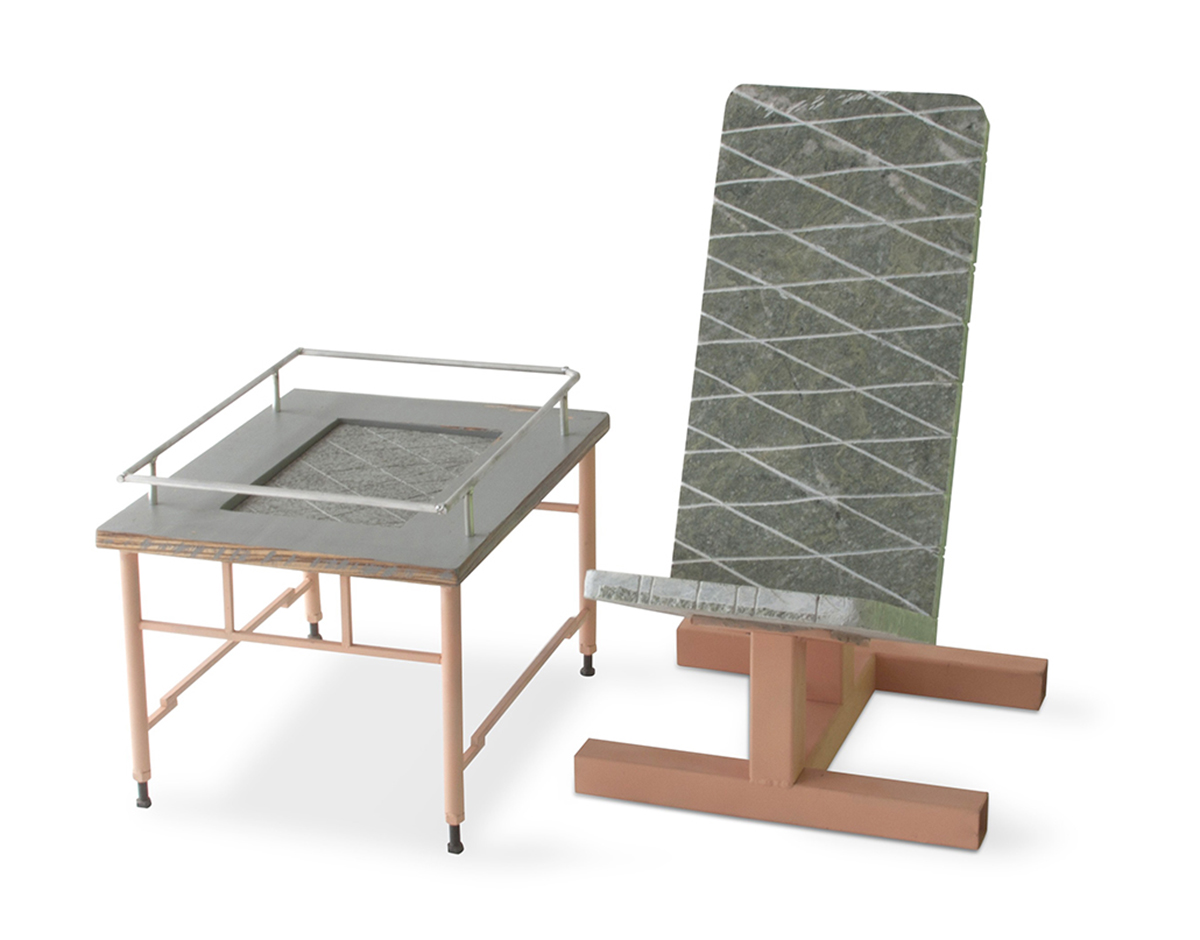

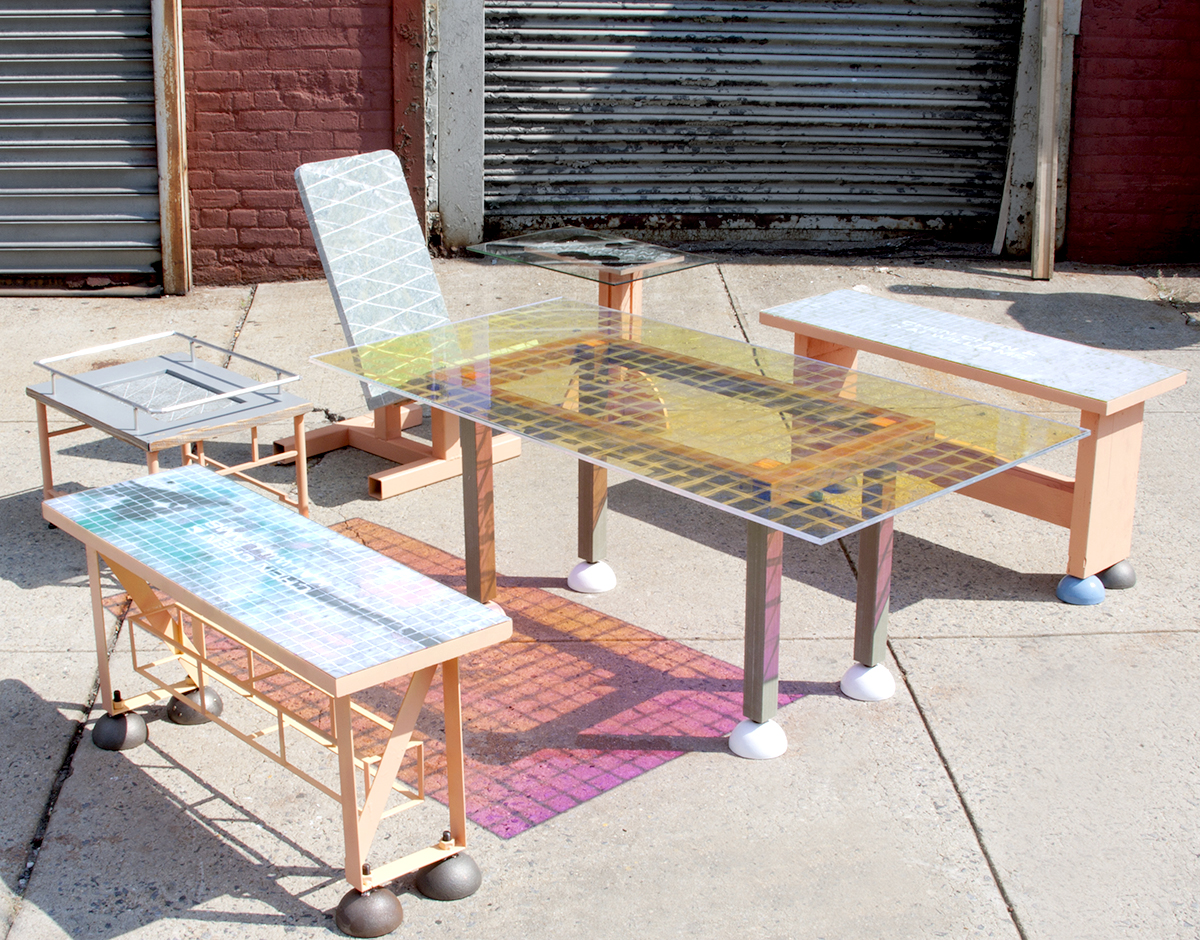
Materials: Carrara marble, wood, epoxy resin, cast iron (bench 1); Carrara marble, steel, epoxy resin, cast iron (bench 2); acid-etched dichloric glass, fiberglass, wood, cast iron (table); glass, fiberglass, epoxy, wood, silicone adhesive (side table); zebra wood, steel, aluminum, granite tile (low table); steel, granite, mastic (chair)
“We’ve been interested in the freehand carving of wood, stone, and glass for some time now. In 2012, we were installing a show in Venice and were blown away by the utilitarian nature of stone carving. Traction is a perennial problem and texture is added where needed. Church floors that had been worn smooth by foot traffic had been hash marked for traction. We spend so much of our time polishing things smooth, we wanted to carve in.”
“Also when you’re shopping for slabs or blocks of stone, often you’ll see a loose, handwritten number or mark in any of a dozen languages and often the logo of the yard spray painted onto the stone surface. This kind of colloquial painting is extremely beautiful. We wanted to explore a loose, freehand, mark-making in stone and glass. The stone was carved out with a diamond-tipped bit and the glass was acid etched. The stone pieces had the sides and bottoms of the slabs painted the same color as the bases so that from far away they looked like laminate but then the carving would reveal that it was real stone.”
“An extension of this is accidental mark-making that comes from construction or fabrication. The squiggles of glue on the backs of mirrors when they get installed is the inspiration for the two black squiggles on the side table, both functional and decorative. The low table has a gray primer that has been sanded — often sanding primer reveals a little of the substrate, in this case we thought it would be funny if you got a peek underneath only to find we had painted some exotic zebra wood.”
